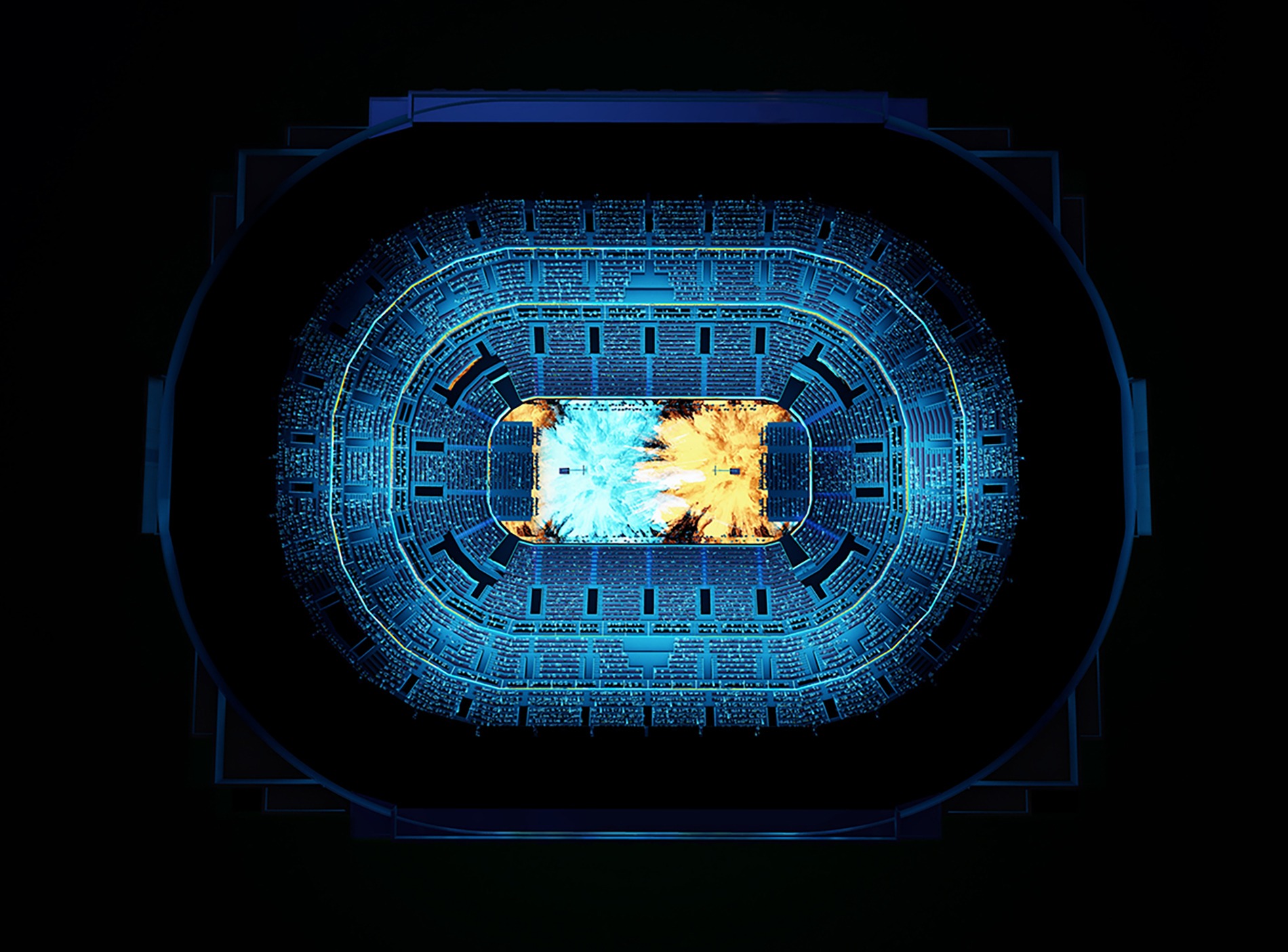As pro sports leagues navigate seasons delayed by COVID-19 and debate the logistics of holding events without fans, many are wondering what lies ahead. HOK’s Rashed Singaby, senior project designer, explains what a phased approach to re-entry could entail.
The NFL has announced guidelines for teams to reopen training facilities and some have already done so. NASCAR just held its first race without fans. Major League Baseball is moving toward an early-July start. While there isn’t a one-size-fits-all solution, a phased plan could address the logistical, safety and revenue concerns.
Phase One: Live Events, Virtual Fans
As fans cheer from afar for the foreseeable future, the challenge will be to make them feel like they’re experiencing an event together. We also want to position venues hosting games without fans to generate interest and build momentum that inspires their eventual return.
In the first phase of re-entry, leagues will take cues from NASCAR and resume play in empty venues. The energy from a crowd typically brings a venue to life. In the interim, teams will look to technology, virtual fan engagement and strategic partnerships to fill the gap. All tech investments should be part of a long-term strategy for the venue.
- Virtual fan engagement: The empty seating bowl could be temporarily covered and transformed into a high-tech content canvas. This immersive experience could include simulated crowd noise and projection, a remote kiss cam or other creative live programming, and virtual viewing parties displayed over the seating bowl.
- Strategic partnerships: The city itself could act as the concourse for fans watching from home. Local restaurants could partner with concessionaires to prepare and deliver stadium food favorites or tailgate packages. Unique game day gear or collectibles could be released in conjunction with games and delivered before the event. A rewards program could offer benefits, deals and incentives to fans who engage virtually.
- Exclusive content: Halftime shows could be more carefully curated with musicians, team Hall of Famers and compelling sponsor messaging keeping fans tuned in. Fans could use the team app to see customized stats, control their camera angles and view behind-the-scenes footage of their favorite players.
Phase Two: Partial Attendance
As it is deemed safe by government officials, venues could welcome back small crowds.
In this second phase of re-entry, even as a limited number of fans experience a live event, teams could still leverage technology to create more dynamic game productions that simulate the charged atmosphere of a sold-out crowd. They will need to balance the operational costs associated with holding partial-attendance events with the revenue opportunities to ensure they are profitable. Sponsorships and continued partnerships with local businesses will be critical.
- Technology: New ordering strategies and carefully timed delivery of concessions could take the place of crowded lines. Parts of the seating bowl could remain masked to allow for virtual fans to participate alongside those in attendance.
- Logistical considerations: With a partially full seating bowl, teams could implement new strategies for traffic flow management, relegating fans to certain areas of the venue and spacing out groups. Concourses could have one-way traffic or graphics that delineate proper spacing. Masks will likely be required. Fans could enter and exit the venue based on their seating area and will only access amenities designated for that area. Clubs could incorporate temporary partitions that divide large spaces into areas for smaller groups.
Phase Three: Full Attendance
We expect fans to return back to venues after officials permit them to fully reopen. Before this can happen, operators will need to evaluate and make incremental changes to their buildings and policies to reduce the risk of infection. Many of these operational and logistical changes will take place during phase two. Teams also will need to consider implementing other long-term changes including more automation, mobile ticketing, online concessions ordering and cashless payments. Technology used and implemented in phase one–like projection and augmented reality–can be repurposed when venues welcome back full crowds.
No one knows exactly when the COVID-19 pandemic will end. But sports will return. The strategies outlined in this phased re-entry approach could help teams and their fans feel more at ease with the entire experience.
About this series: HOK’s Sports + Recreation + Entertainment leaders are exploring the impact of COVID-19 on sports and entertainment venues.
